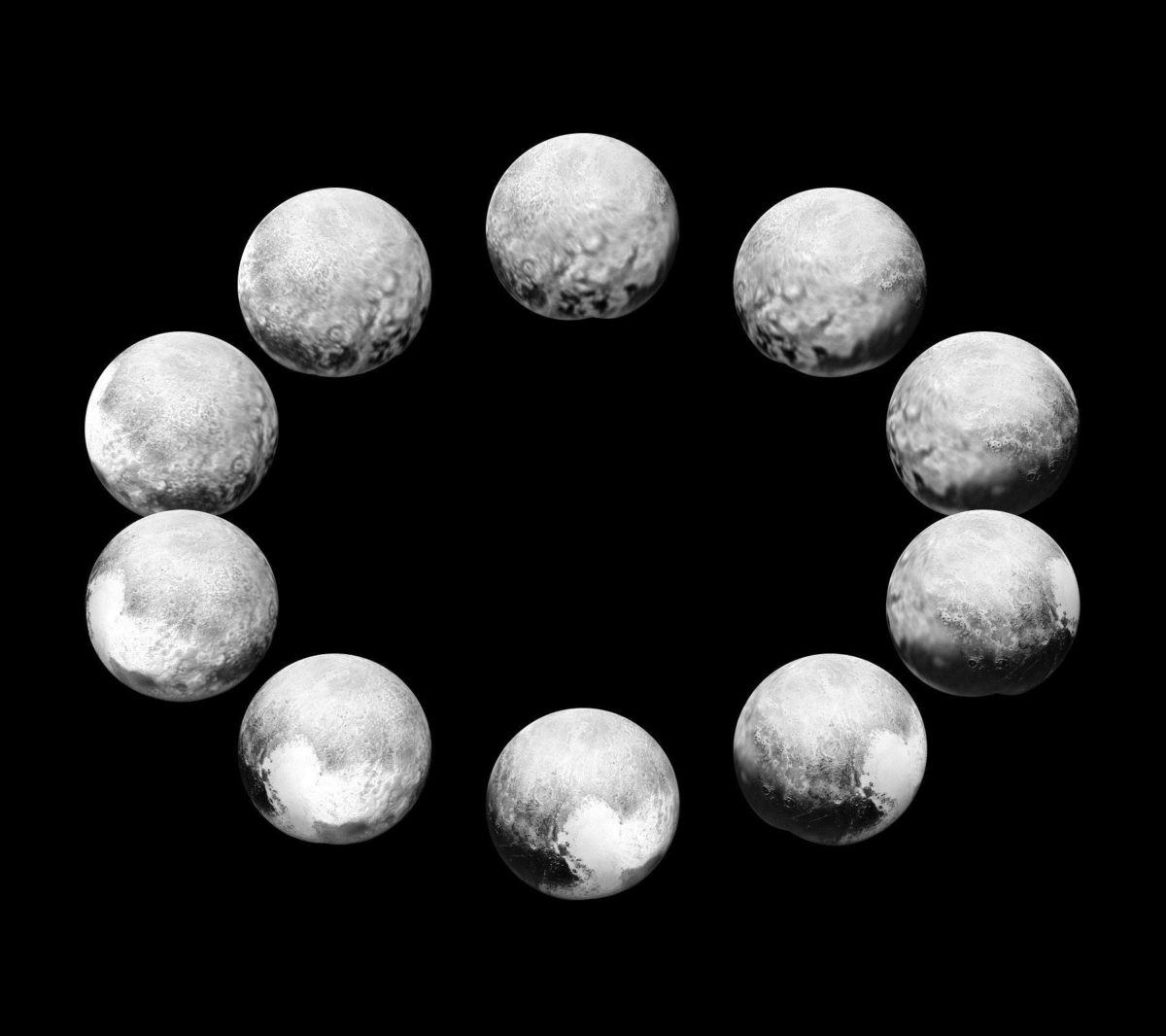Bruce Murray Space Image Library
A day on Pluto

On approach to Pluto in July 2015, the cameras on NASA's New Horizons spacecraft captured the planet rotating over the course of a full Pluto day. The best available images of each side of Pluto taken during approach have been combined to create this view of a full rotation.
Pluto’s day is 6.4 Earth days long. The images were taken by the Long Range Reconnaissance Imager (LORRI) and the Ralph/Multispectral Visible Imaging Camera as the distance between New Horizons and Pluto decreased from 8 million kilometers on July 7 to only ~645,000 kilometers on July 13. The more distant images contribute to the view at the 3 o'clock position, with the top of the heart-shaped, informally named Tombaugh Regio slipping out of view and giving way to the side of Pluto that was facing away from New Horizons during closest approach on July 14. The side New Horizons saw in most detail – what the mission team calls the “encounter hemisphere” – is at the 6 o'clock position.
These images and others like them reveal many details about Pluto, including the differences between the encounter hemisphere and the so-called “far side” hemisphere seen only at lower resolution. Dimples in the bottom (south) edge of Pluto's disk are artifacts of the way the images were combined to create these composites.
NASA / JHUAPL /SwRI

 Explore Worlds
Explore Worlds Find Life
Find Life Defend Earth
Defend Earth

